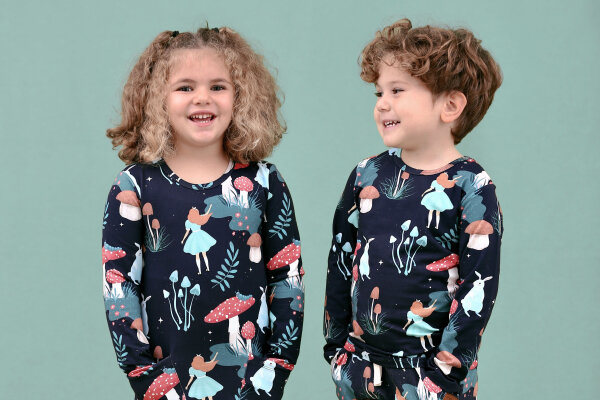Whether you are a fashionista or not, you are aware that new products are constantly being introduced to the market. As trends in the fashion industry are constantly changing and brands want to produce more at low cost, new clothes are being offered to the masses. Products that cannot be sold during the season are discounted and thus consumption is tried to be increased. But, what happens to products that cannot be sold during the season and on sale? We wish the answer to this question was “they are donated” or “recycled” but unfortunately that's not the case.
As a result, this consumption frenzy has negative consequences for the environment. The textile industry is responsible for about 10 percent of global greenhouse gas emissions [1]. This means that the textile industry consumes more energy than air and sea transport combined [2]. Yes, the textile production process is causing enormous damage to the environment, and overproduction multiplies this detriment. About 30% of the clothes produced each season are not sold [3]. The unsold stock needs to be eliminated to make room for “more trendy clothes”.
So what really happens to these surplus goods? Probably the worst thing we can think of about what happens to unsold clothes is to throw them away or destroy them. Unfortunately, we know that some luxury fashion brands burn unsold clothing and cosmetics at the end of the season to avoid devaluing their image in the eyes of consumers through discounts [4]. But it's not just high-end brands that are extremely wasteful. It has also been reported that many famous fast fashion brands burn unsold garments [5]. When brands are accused of burning unsold stocks, they can claim that the energy released by burning these products makes the process environmentally friendly. But while burning unsold clothing can help recover some energy, it replicates the true climate impact of products, according to a report presented in 2019. When burning clothes, carbon dioxide, and other gases are released into the atmosphere, contributing to global warming and harming our health. Also, many clothes today are made from plastic, and burning these clothes can release plastic microfibres into the atmosphere. Even if clothes are not incinerated and "simply" thrown into landfills, they take years to decompose [6].
However, fortunately, consumer habits are changing and this is causing brands to start pursuing more socially responsible strategies. Some brands start to prefer to donate their dead stocks rather than destroy them. However, this is still not enough to prevent waste, because while one brand is donating a product, at least five products of another brand are destroyed. For a radical solution to this problem, brands should adopt sustainability and the important players in the sector should produce less. It is also important to make legal arrangements that prevent the destruction of products that cannot be sold as in France [7].
What can brands do to reduce unsold clothing?
- The needs of consumers can be better understood and even by allowing consumers to pre-order products, model and size production can be determined according to need by making use of technology.
- New products can be introduced to the market by recycling dead stocks.
- Unsold clothes can be donated to charities and delivered to those in need.
- Timeless collections that do not go out of style can be held and resold until the next appropriate season.
- Outdated collections can be resold as new with design additions and minor renovations.
- Brands can encourage customers who bring their old clothes to recycle by offering discount coupons or special offers.
What can consumers do about unsold clothes?
- Instead of buying products from fast fashion brands, you can support sustainable and ethical fashion brands.
- You can contribute to recycling by shopping second-hand or by exchanging clothes.
- You can recycle your unused clothes by producing new designs.
- You can donate clothes that are too small for your child or things you don't use anymore.
As Walkiddy, we work with our partners by taking pre-orders. Thus, we can prevent the waste of clothes by determining the production number of our collections according to the demand… And as a customer, you can choose sustainable brands when buying clothes for your child and yourself. Also, you can take a step to prevent the harm caused by unsold clothes by following the methods above.
[2] https://unfccc.int/news/un-helps-fashion-industry-shift-to-low-carbon
[4] https://www.bbc.com/news/business-44885983
[5] https://www.euronews.com/2017/10/18/tv-report-claims-hm-burns-unsold-clothes
[6] https://www.bbcearth.com/news/will-fashion-firms-stop-burning-clothes



